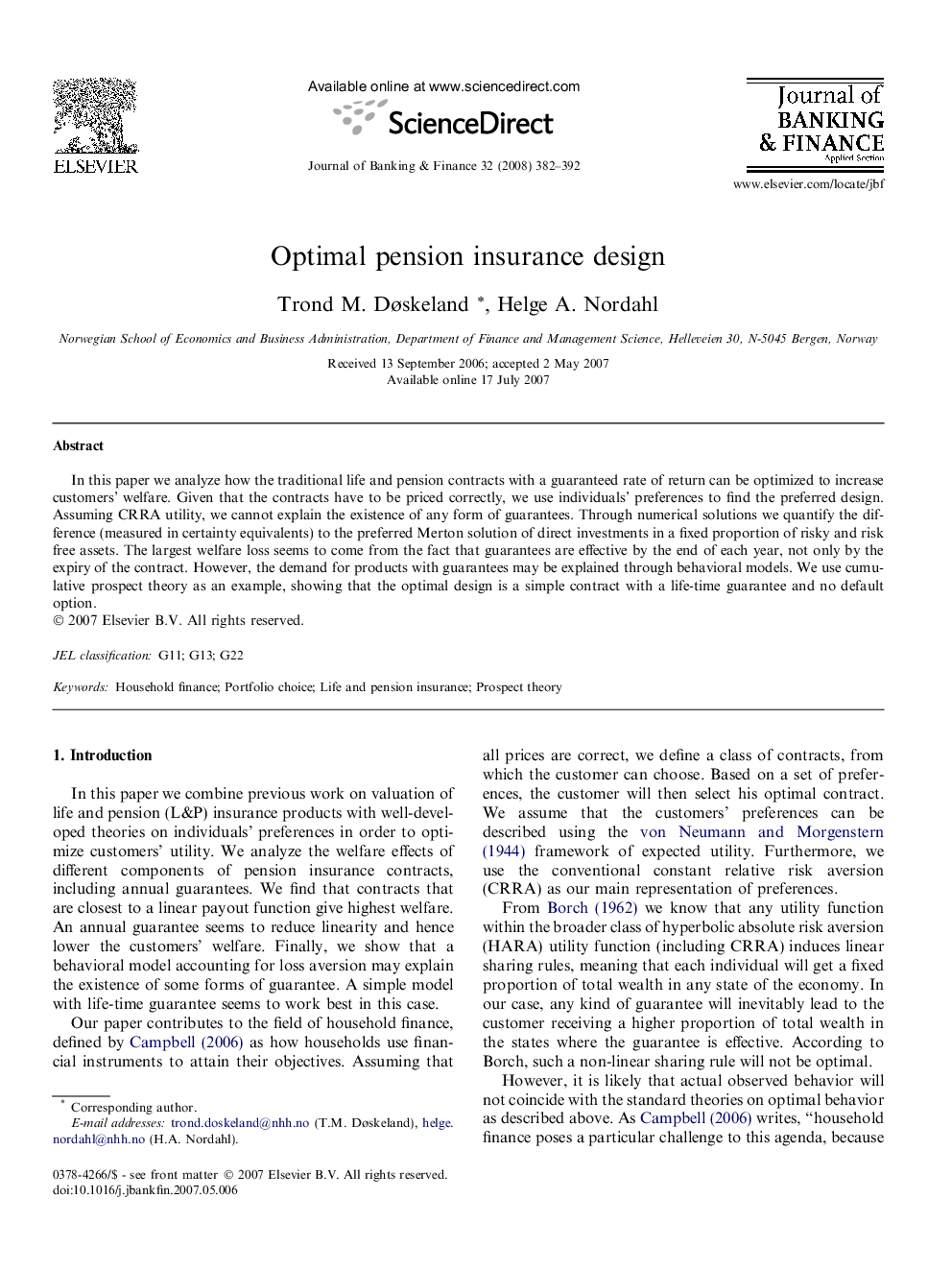| Article ID | Journal | Published Year | Pages | File Type |
|---|---|---|---|---|
| 5090958 | Journal of Banking & Finance | 2008 | 11 Pages |
Abstract
In this paper we analyze how the traditional life and pension contracts with a guaranteed rate of return can be optimized to increase customers' welfare. Given that the contracts have to be priced correctly, we use individuals' preferences to find the preferred design. Assuming CRRA utility, we cannot explain the existence of any form of guarantees. Through numerical solutions we quantify the difference (measured in certainty equivalents) to the preferred Merton solution of direct investments in a fixed proportion of risky and risk free assets. The largest welfare loss seems to come from the fact that guarantees are effective by the end of each year, not only by the expiry of the contract. However, the demand for products with guarantees may be explained through behavioral models. We use cumulative prospect theory as an example, showing that the optimal design is a simple contract with a life-time guarantee and no default option.
Related Topics
Social Sciences and Humanities
Economics, Econometrics and Finance
Economics and Econometrics
Authors
Trond M. Døskeland, Helge A. Nordahl,
